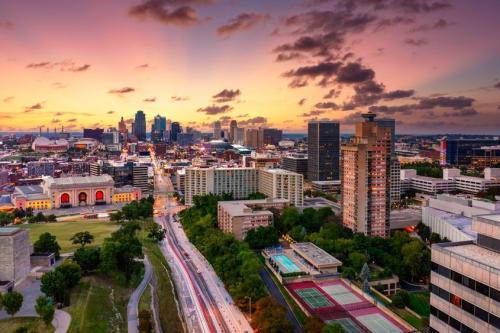Once upon a time, innovation was an isolationist sport. In America’s innovative economy 20 years ago, a worker drove to a nondescript office campus along a suburban corridor, worked in isolation, and kept ideas secret.
Today, by contrast and partly a result of the Great Recession, proximity is everything. Talented people want to work and live in urban places that are walkable, bike-able, connected by transit, and hyper-caffeinated. Major companies across multiple sectors are practicing “open innovation” and want to be close to other firms, research labs, and universities. Entrepreneurs want to start their companies in collaborative spaces, where they can share ideas and have efficient access to everything from legal advice to sophisticated lab equipment.
These disruptive forces are coming to ground in small, primarily urban enclaves—what we and others are calling “innovation districts.” By our definition, innovation districts cluster and connect leading-edge institutions with startups and spin-off companies, business incubators, and accelerators in the relentless pursuit of cutting-edge discoveries for the market. Compact, transit-accessible, and highly networked, they grow talent, foster open collaboration, and offer mixed-used housing, office, retail, and 21st century urban amenities. In many respects, the rise of innovation districts embodies the very essence of cities: an aggregation of talented, driven people assembled in close quarters, who exchange ideas and knowledge. It’s in the vein of what urban historian Sir Peter Hall calls “a dynamic process of innovation, imitation and improvement.”
Globally, Montreal, Seoul, Singapore, Medellin, Barcelona, Cambridge, and Berlin offer just a few examples of evolving innovation districts. In the US, the most iconic innovation districts can be found in the downtowns and midtowns of cities like Atlanta, Cambridge, Philadelphia, Pittsburgh, San Diego, and St. Louis, where advanced research universities, medical complexes, research institutions, and clusters of tech and creative firms are sparking business expansion, as well as residential and commercial growth. Even a cursory visit to Kendall Square in Cambridge, University City in Philadelphia, or midtown Atlanta shows the explosion of growth and mixed development occurring around institutions like MIT, the University of Pennsylvania, and Georgia Tech.
Other innovation districts can be found in Boston, Brooklyn, San Francisco, and Seattle, where former industrial and warehouse areas are charting a new innovative path, powered by their enviable location along transit lines, their proximity to downtowns and waterfronts, and their recent addition of advanced research institutions (reflected by Carnegie Mellon University’s decision to place its Integrative Media Program at the Brooklyn Navy Yard).
Perhaps the greatest validation of this shift is found in the efforts of traditional exurban science parks (like Research Triangle Park in Raleigh-Durham) to urbanize, in order to keep pace with the preferences of their workers for walkable communities and the preference of their firms to be near other firms and collaborative opportunities.
Innovation districts are already attracting an eclectic mix of firms in a diverse group of sectors, including life sciences, clean energy, design, and tech. We even see a return of small-scale and customized manufacturing, made possible by 3D printing, robotics, and other advanced techniques.
Unlike efforts to grow the “consumer city” via sports stadia, luxury housing, and high-end retail, innovation districts are intent on growing the firms, networks, and sectors that drive real, broad-based prosperity.
At a time of increasing concerns over inequality and resilience, innovation districts can spur productive, inclusive, and sustainable growth. If properly structured and scaled, they can provide a strong foundation for the commercialization of ideas, the expansion of firms, and the creation of jobs. They also offer the tantalizing prospect of expanding employment and educational opportunities for disadvantaged populations—many innovation districts are close to low- and moderate-income neighborhoods—as well as sparking more sustainable development patterns, given their embrace of transit, historic buildings, traditional street grids, and existing infrastructure.
Innovation districts represent one of the most positive trends that have emerged in the aftermath of the Great Recession. Smart cities, innovative companies, advanced universities, and financial institutions would be wise to embrace them.
This piece originally appeared on Quartz.



Commentary
Op-edWhat A City Needs to Foster Innovation
January 16, 2014